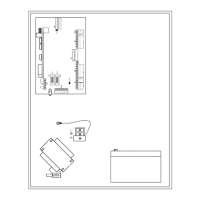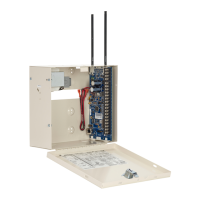Advisor Advanced ATSx000A(-IP) Installation and Programming Manual 207
the same account code is reported to the central station. Other area set and
unset events are not reported.
For example, premises include areas 1, 2, and 4 (that have the same account
code). The owner unsets areas 1, 2, and then 4 on morning, and sets them in the
same order on evening. The event is sent to the central station only when he
unset area 1, and sets area 4.
After all abovementioned conditions are met, the event is waiting to be reported.
The possible reporting delay depends on whether it is a delayed event, what
communication paths are available, and how many events with higher priority are
already waiting for reporting.
Reporting order
If there are a few events waiting for reporting, and there are a few central stations
to report to, the following principles are applied.
Connect to primary central stations
From all primary central stations that need to be communicated due to existing
events and their mapping, the system starts establishing connection from the
lower CS numbers to the higher ones.
For example, if there are events to report to primary central stations 1, 3, and 6,
the system tries to contact the CS 1 first.
Note: The first connection attempt is always performed twice. The same applies
backup central stations.
If the communication attempt fails, the system tries to contact CS 3, and then
CS 6. If the CS 6 connection is also unavailable, the system starts with CS 1
again.
If there are configured the same delays and connection attempt numbers,
Advisor Advanced attempts to report to central stations in the following order:
1, 1, 3, 3, 6, 6, 1, 3, 6, 1, 3, 6, etc.
Use the backup central stations
In case the primary central station reporting fails, the system tries to send the
event to the appropriate backup central station. For example, if there are primary
central stations CS 1 and CS 4, and there are central stations CS 2 and CS 3,
which are backup stations for CS 1. Advisor Advanced tries to report to central
stations in the following order:
1, 1, 4, 4, 2, 2, 4, 3, 3, 4, 1, 4, 2, 4, 3, 4, 1, etc.
Note: To keep reporting order transparent, always program event mapping to
backup central stations the same as mapping to primary central station.
Report all necessary events to the central station
Once the communication to the central station is established, the system reports
all active events that are mapped to this central station.

